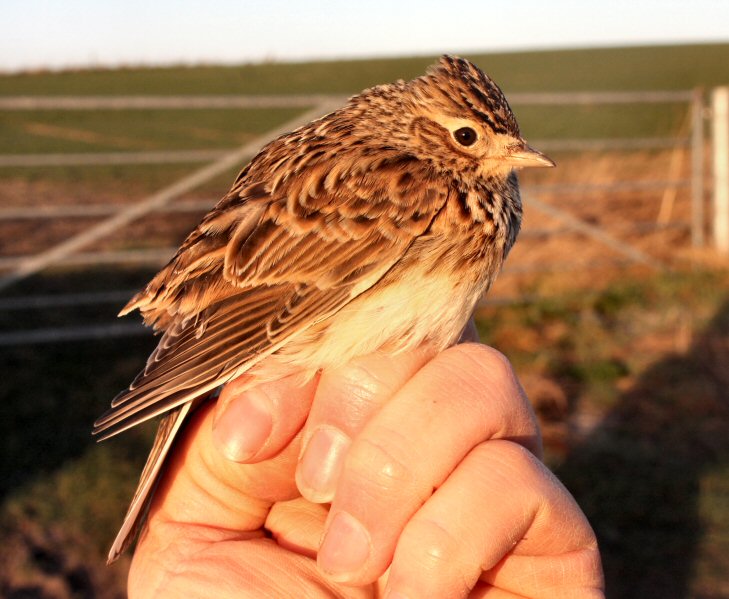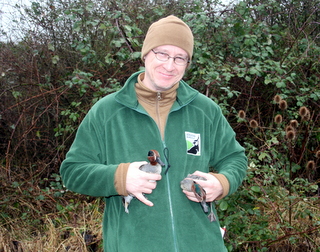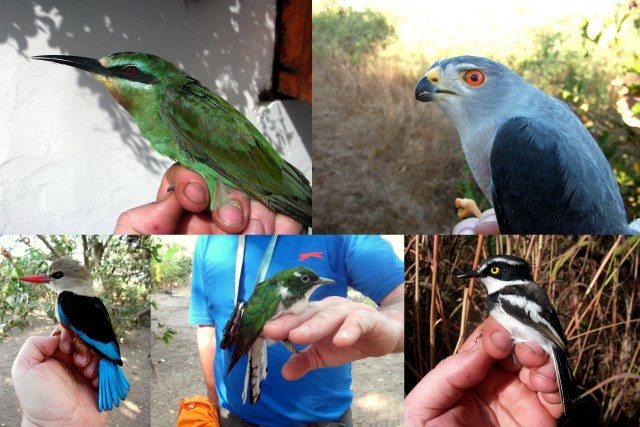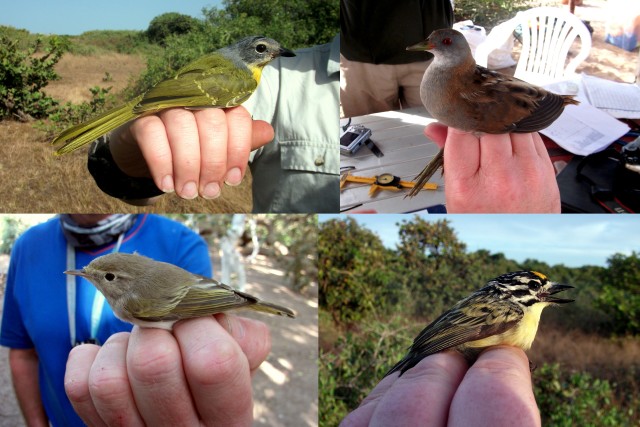As ever, our ringing lives are dominated by weather and with today being forecast as zero wind this was the right time to be ringing the most amazing farmland bird site that there is. This is the site of the very first Higher Level Stewardship Scheme with specific features tailored to Tree Sparrows based on my work on the site since 1999. When feeding this site for the past two months I have seen clouds of Tree Sparrows swirling up and down the hedgerow and with the perfect weather it really did feel like this may be the only chance to ring this fabulous place this winter.
Thankfully we had a good sized team out that would be able to deal with most situations with Will making the journey across from Oxford, Simon, Paul W and Jack.
The net set was an eclectic mix of two-shelfers, and every net size of North Ron net placed at strategic points across and against hedgerows and also in a kale crop, all tailored to intercept Tree Sparrows.
We targeted Little Owl at dawn and succeeded and we also added 3 Corn Buntings in the first round but Grey Partridge again managed to elude us. Our world filled with Yellowhammers and Tree Sparrows, ably supported by Linnets and Chaffinches. Rarely have I seen such numbers of Tree Sparrows and we caught a total of 69 but there were over 300 present which is a record for the site and makes it the biggest flock that we currently have. This site is our largest nest box site and days like today really make it all worthwhile as we recaptured a lot of birds originally ringed as nestlings. We had 25 from this site last summer, 2 from summer 2011 and 1 from summer 2010. We also had 2 from last winter, 3 ringed as nestlings at a site 2.5km north and 1 ringed as a nestling 11km north.
Yellowhammers continue to give us good data with 1 from last winter, 3 from 2 years ago and 2 from 4 years ago – one ringed by Nigel which is nice to see birds that he ringed in Wiltshire still going while he is doing such a great job of ringing in Norway. Retrap Linnets are uncommon so to catch a bird from last winter is good.
299 new and 51 retrapped made for another truly remarkable farmland bird ringing session and it really is a pleasure to see the team doing so well. This was the second biggest catch of Tree Sparrows that I have ever had and to see them prospering so well really makes the summer long slog worthwhile. MP, WH, JN, SW, PW
Tree Sparrow 35 (34), Yellowhammer 148 (9), Corn Bunting 3, Chaffinch 44 (3), Linnet 38 (1), Goldfinch 9, Reed Bunting 6, Dunnock 9 (1), Robin 1, Wren 1, Blackbird 3, Starling 1, Little Owl 1, Great Tit 0 (4)










